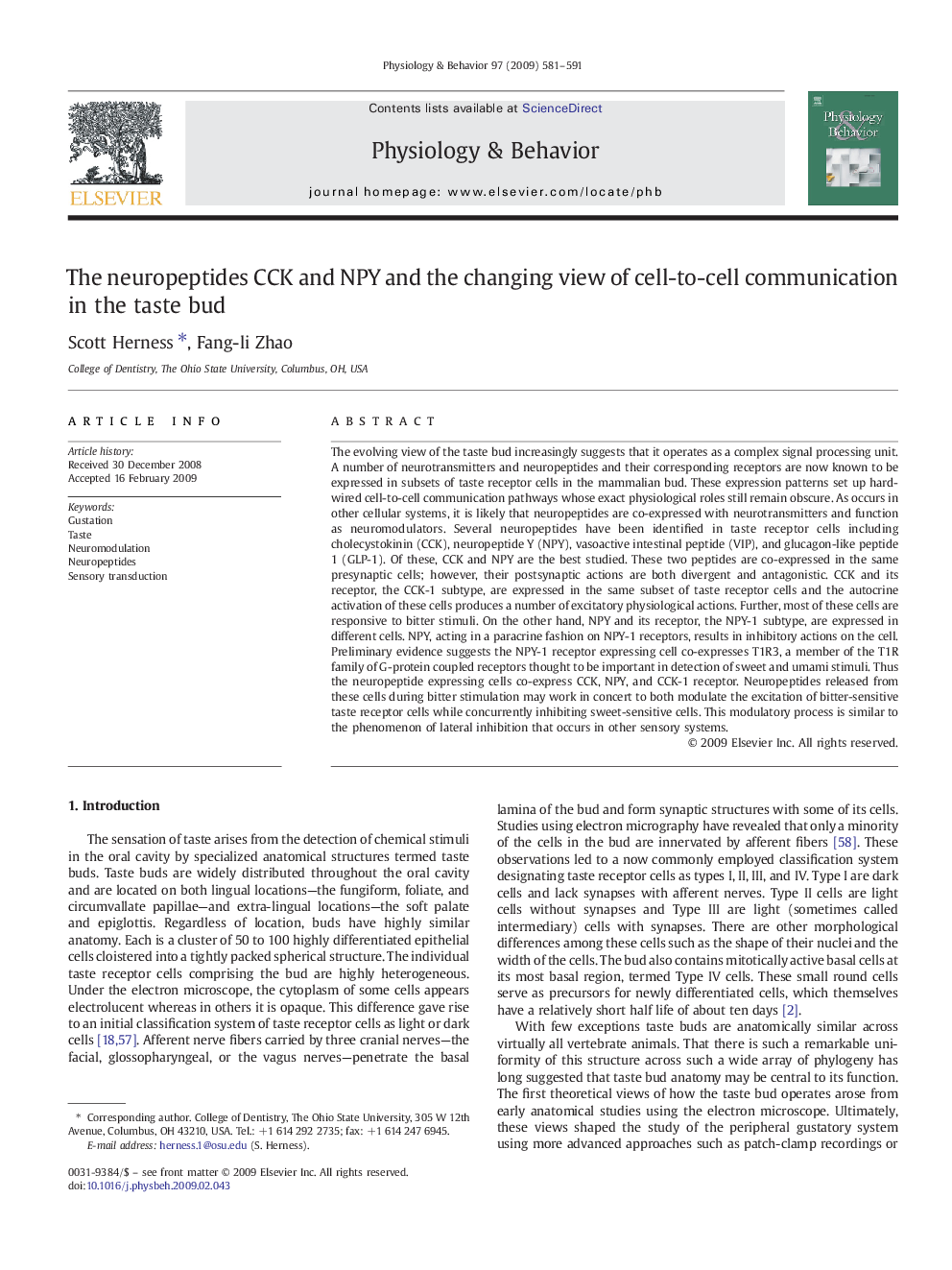| کد مقاله | کد نشریه | سال انتشار | مقاله انگلیسی | نسخه تمام متن |
|---|---|---|---|---|
| 2845263 | 1166385 | 2009 | 11 صفحه PDF | دانلود رایگان |

The evolving view of the taste bud increasingly suggests that it operates as a complex signal processing unit. A number of neurotransmitters and neuropeptides and their corresponding receptors are now known to be expressed in subsets of taste receptor cells in the mammalian bud. These expression patterns set up hard-wired cell-to-cell communication pathways whose exact physiological roles still remain obscure. As occurs in other cellular systems, it is likely that neuropeptides are co-expressed with neurotransmitters and function as neuromodulators. Several neuropeptides have been identified in taste receptor cells including cholecystokinin (CCK), neuropeptide Y (NPY), vasoactive intestinal peptide (VIP), and glucagon-like peptide 1 (GLP-1). Of these, CCK and NPY are the best studied. These two peptides are co-expressed in the same presynaptic cells; however, their postsynaptic actions are both divergent and antagonistic. CCK and its receptor, the CCK-1 subtype, are expressed in the same subset of taste receptor cells and the autocrine activation of these cells produces a number of excitatory physiological actions. Further, most of these cells are responsive to bitter stimuli. On the other hand, NPY and its receptor, the NPY-1 subtype, are expressed in different cells. NPY, acting in a paracrine fashion on NPY-1 receptors, results in inhibitory actions on the cell. Preliminary evidence suggests the NPY-1 receptor expressing cell co-expresses T1R3, a member of the T1R family of G-protein coupled receptors thought to be important in detection of sweet and umami stimuli. Thus the neuropeptide expressing cells co-express CCK, NPY, and CCK-1 receptor. Neuropeptides released from these cells during bitter stimulation may work in concert to both modulate the excitation of bitter-sensitive taste receptor cells while concurrently inhibiting sweet-sensitive cells. This modulatory process is similar to the phenomenon of lateral inhibition that occurs in other sensory systems.
Journal: Physiology & Behavior - Volume 97, Issue 5, 14 July 2009, Pages 581–591